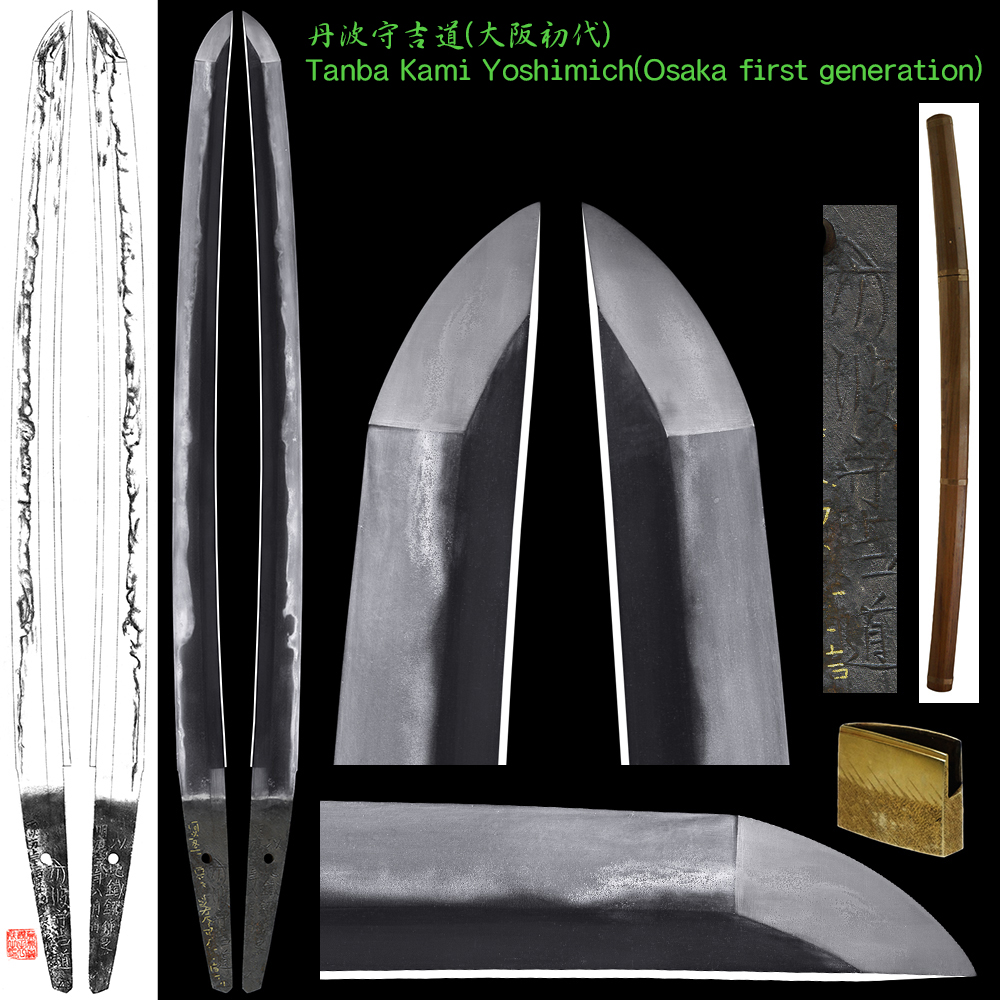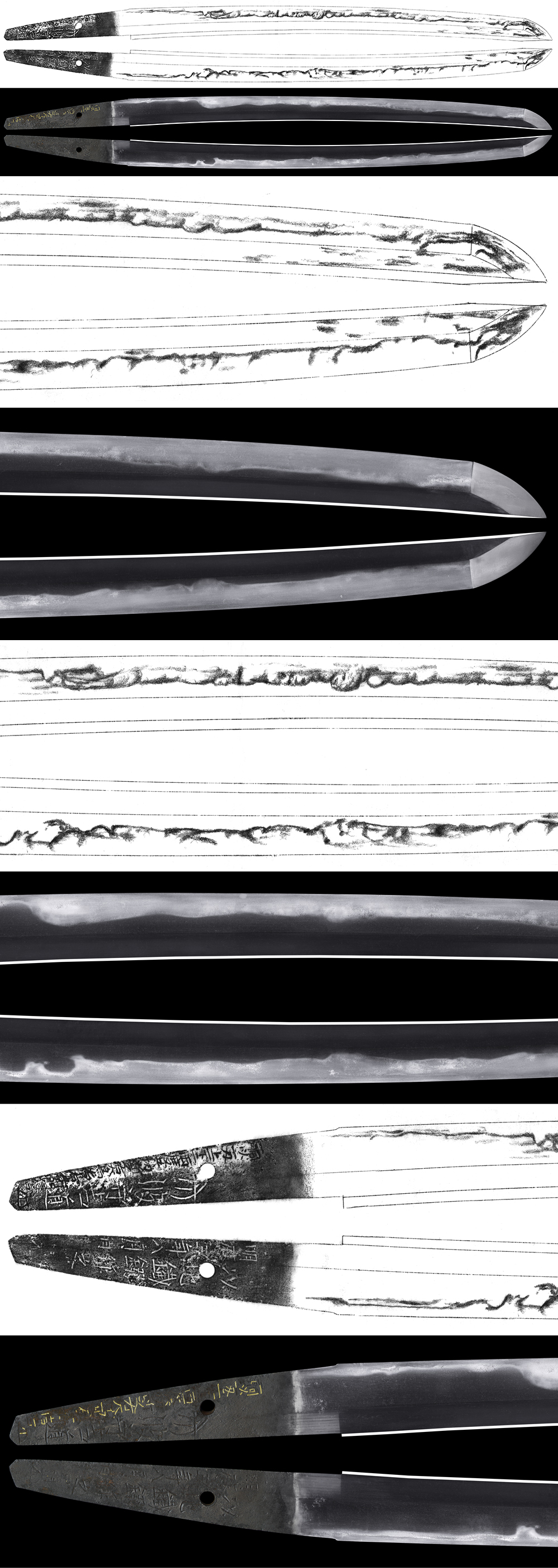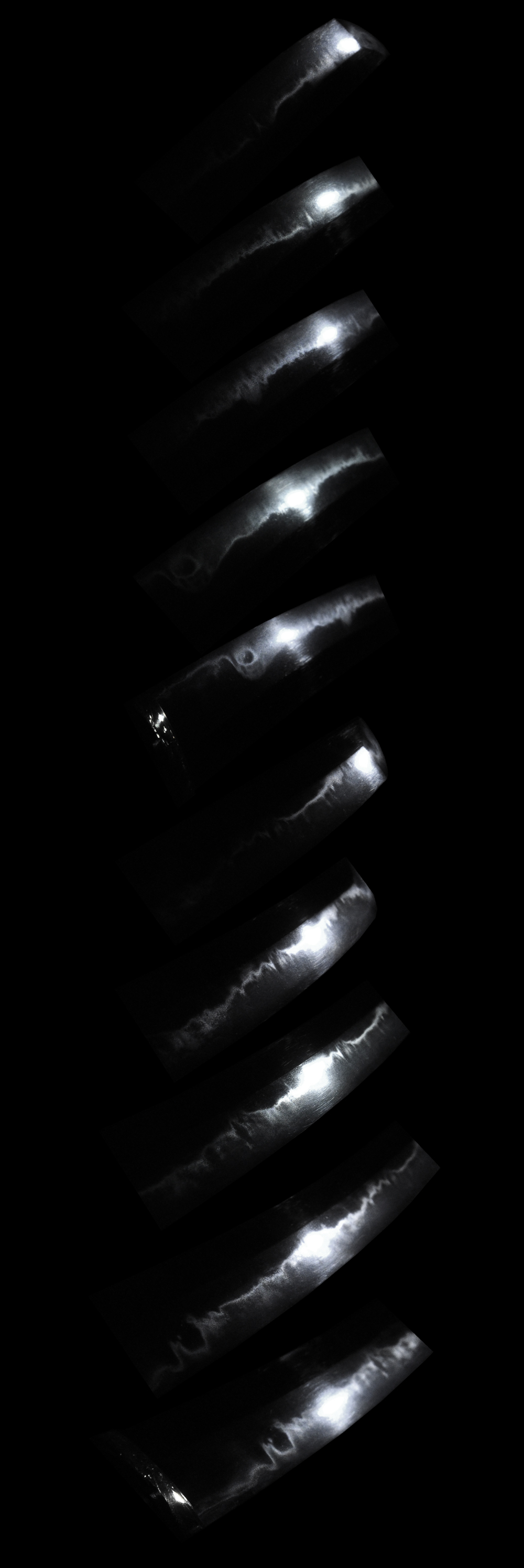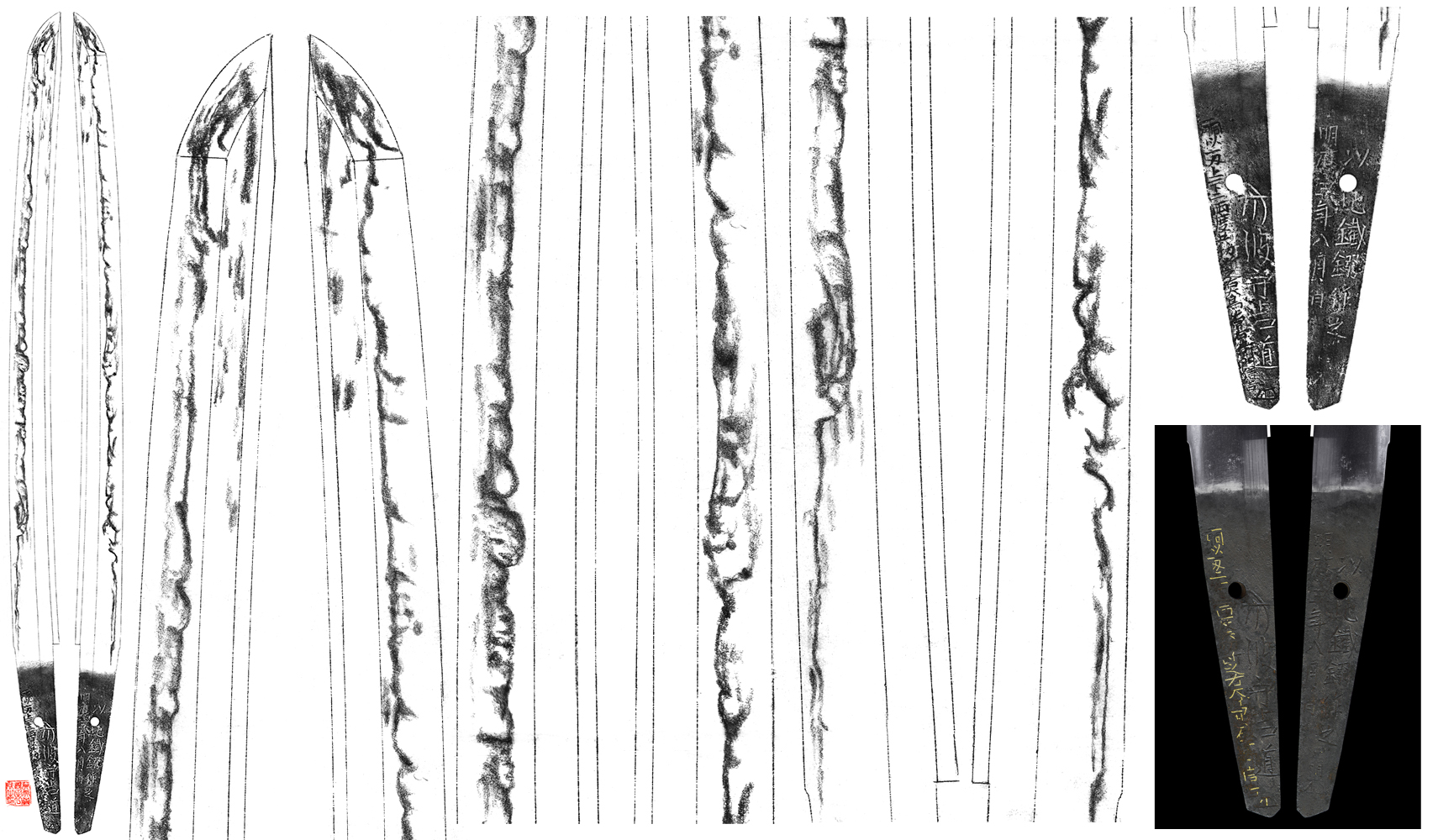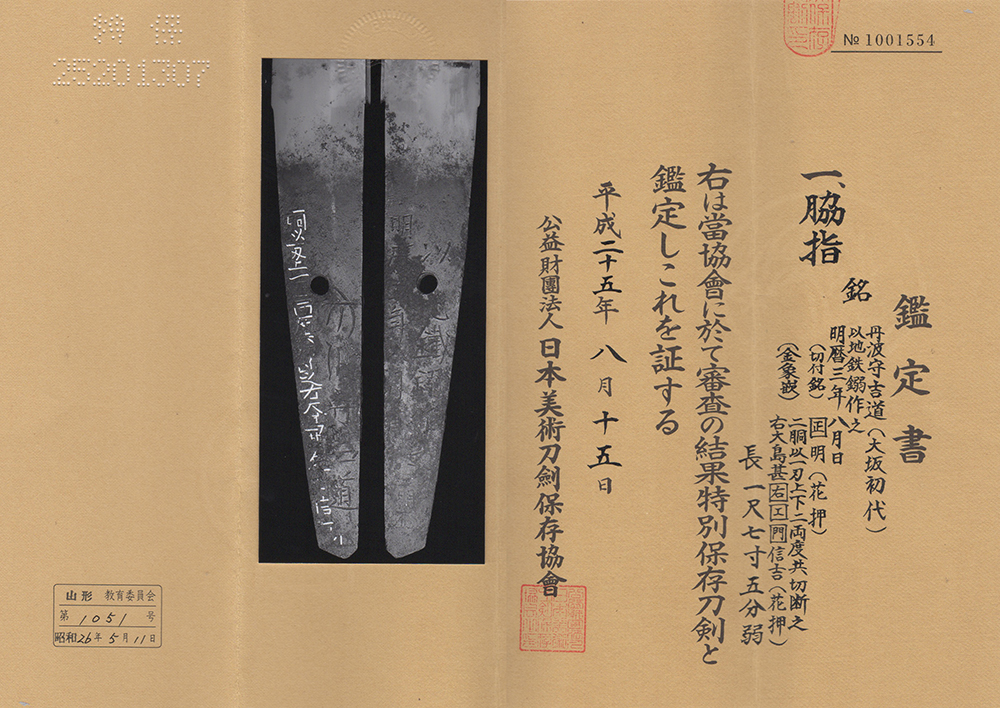Wakizashi : Tanba Kami Yoshimich(Osaka first generation)
2017/01/04
Wakizashi in Shirasaya (NBTHK Tokubetsu Hozon Paper)
Signature : Tanba Kami Yoshimich(Osaka first generation)
1 Do 1 Haagari Ue 1 Shita 2 Ryodo Tomo Setsudan No
Migi ooshima Zenuemon Nobuyosi Kaou
Motte Jitetsu Suzu saku no meireki 3 Nen 8 Gatsuhi Motte Nanbantetsu Saku no.
The blade was polished.
Habaki:gold foiled single habaki.
Habaki : Single silver kawari habaki.
Blade length : 53.01 cm or 20.87 inches.
Sori : 1.05 cm or 0.41 inches.
Mekugi : 1
Width at the hamachi : 3.37 cm or 1.32 inches.
Width at the Kissaki : 2.54 cm or 1 inches.
Kasane : 0.74 cm or 0.29 inches.
Era : Edo Kanbun period.
Shape : The blade is wide and thick healthy blade.
Jitetsu :Koitame had well grained with jinie attach.
Hamon : Niedeki suguha from the Hamachi area
and then sudareba hamon. Boshi is round shape.
Special feature : The Mishina School in Kyoto hatched four schools;
Kyo Tamba (No) Kami, Fushimi Tamba (No) Kami, Osaka Tamba (No) Kami and Yamato (No) Kami.
Shallow curvature of the blade is one of a distinctive feature of Kambun-shinto.
It is said that the characteristic hamon called Sudare-ba originated
with Tamba (No) Kami Yoshimichi. Sudare means a bamboo blind in Japanese.
This sword belongs to first generation Oosaka Tanba Kami Yoshimichi.
The sword was cutting test was done by Ooshima Zenuemon Nobuyoshi.
The cutting test was done 2 times by sword contained tin which makes stronger and avoid
making rust. and also used by Nanbantetsu iro.
Sudareba active hamon was invented by Tanba Kami Yoshimichi
This sword is also typical Sudareba hamon.
NBTHK Tokubetsu Hozon paper.
Aoi Art estimation paper : whole Oshigata.
